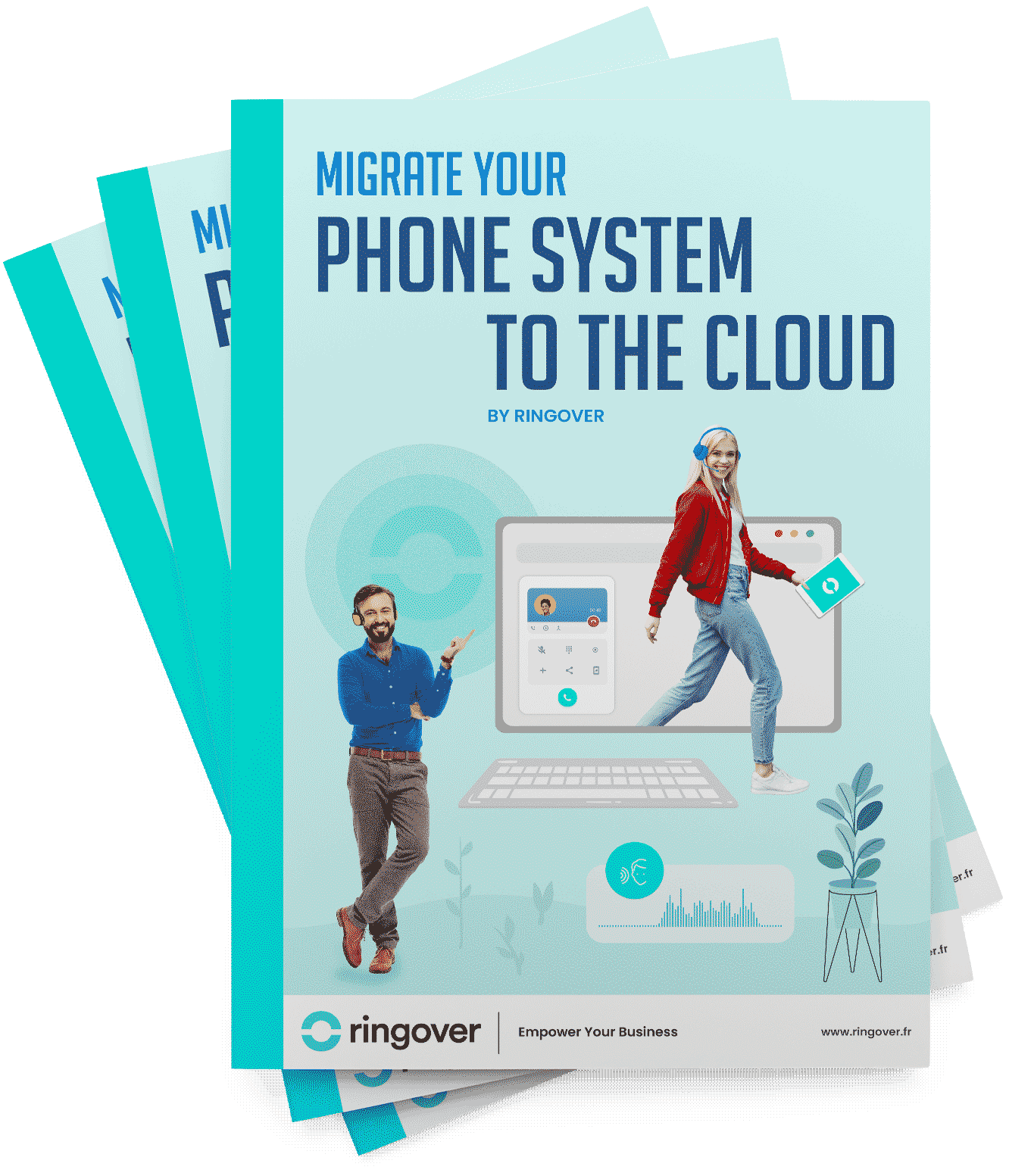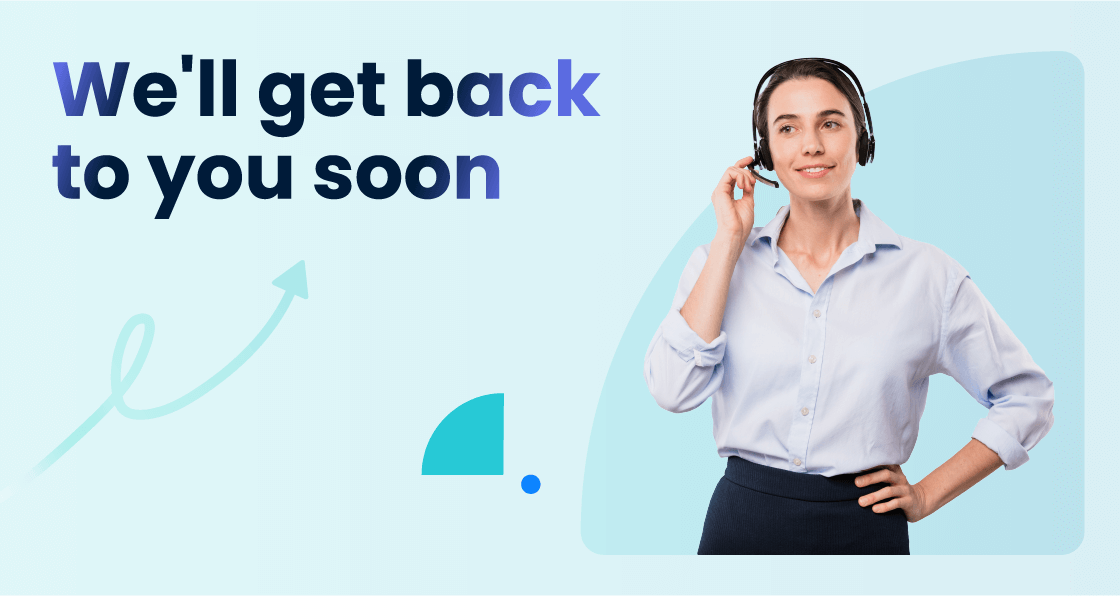Summary
The SaaS sector is undoubtedly one of the most dynamic in terms of innovation. Estimated at over $273.55 billion in 2023, it could reach $1,228.87 billion by 2032 according to some projections. Between emerging trends and key statistics, what does the SaaS landscape look like today? What are the current challenges of the SaaS market in 2025 and how to address them?
Try Ringover For Free!Key Figures of the SaaS Market in 2025
- In 2023, the global SaaS market is valued at $273.55 billion. (Fortune Business Insights)
- In 2032, the SaaS market could reach a valuation of $1,228.87 billion. (Fortune Business Insights)
- The US SaaS market could generate $190.10 billion in 2024 (Statista)
- In April 2024, the top three major players in the SaaS sector are Salesforce and Intuit. (Mike Sonders)
- SaaS companies' marketing and sales expenses represent 50% or more of their revenue. (McKinsey)
- By 2025, 85% of professional software solutions will be SaaS applications. (CapChase)
The SaaS software market is characterized by unprecedented growth dynamics. The race for innovation means companies, in search of flexible, secure, and efficient solutions, are massively turning to SaaS to stay competitive.
This mapping of the SaaS market shows a bustling sector, full of opportunities for software publishers and their clients. However, what perspectives and challenges are on the horizon?
You can leverage a SaaS like RIngover’s VoIP software to communicate more effectively and efficiently with your customers and prospects.
The Rapidly Expanding SaaS Market
SaaS crosses sector boundaries, penetrates various company functions, and conquers new regions, offering tailored solutions to meet the specific demands of each user.
The ease of use, cost savings, and flexibility that SaaS offers also attract small and medium-sized enterprises, which see it as a valuable tool for their development.
This rapid expansion of the SaaS market can be explained in several ways:
The Digital Transformation of Companies
The digital transformation of companies in search of operational efficiency, enriched customer experience, innovation, and distinction from competitors. Thanks to SaaS, they access cutting-edge technologies without having to invest massively in heavy and expensive infrastructures. According to a study by TVH Consulting, 69% of decision-makers believe that digital transformation mainly involves integrating new digital technologies into different functions.
The Advent of Remote Work
According to a study by Ringover conducted in the US, over 66% of people support remote work. The increasing mobility of the workforce, which requires flexible solutions, accessible from anywhere, on various devices and operating systems, contributes to this expansion of the SaaS market. Indeed, SaaS meets this need by ensuring constant connectivity, seamless data synchronization, and instant collaboration.
Tool Interoperability
The advanced integration of business processes, requiring solutions capable of easily communicating with each other, sharing data, and adapting to changes in business environments. SaaS stands out for its ability to ensure interoperability, customization, and flexibility of applications through native integrations, webhooks, APIs.
Data Security
This is a major concern for companies facing threats of cyberattacks, data loss, or theft. SaaS offers robust security solutions, including data backup and restoration systems, as well as strict compliance with regulatory standards.
Data on Global SaaS Trends
The United States dominates the SaaS market
With major players like Salesforce, Adobe, Cisco, or Alphabet based in the US, the United States dominates the SaaS market. The US SaaS market alone would represent nearly $135 billion according to Statista.
Europe ranks second in the global market, driven by an innovative Germany, whose market could reach $16.3 billion by 2025.
Telecom and financial services are the best-represented industries
Logically, the telecom industry represents nearly a quarter of SaaS market revenue according to Fortune Business Insights. It is followed by the financial services and insurance sector (20.5%) and the retail industry, which closes the podium. There is also strong growth in the healthcare sector driven by recent advances in telemedicine.
How to Conquer the SaaS Market?
In a highly competitive universe like the SaaS market, where the battle rages between small publishers and giants of the sector, prosperity does not rest solely on a quality product. Some niches are saturated, and consumer expectations are constantly growing.
The key to survival and success rests as much on the go-to-market strategy as on the excellence of the product itself. But then, on what levers to rely to shine?
Here is an essential guide to developing an approach aligned with both your product and your target audience.
1. Have a Fine Understanding of Customer Needs
Understanding who your customers are and what their needs are. First, developing an effective strategy starts with a precise identification of your ideal customer.
Companies must analyze demographic data, study behaviors and motivations, as well as the challenges and expectations of potential customers. It is crucial to identify the factors driving your customers to choose your solution, as well as the barriers that could dissuade them.
Defining the most effective communication channels is also essential to impactfully reach your target, using language and context that resonate with them.
2. Select the Right Marketing Channels
Selecting marketing channels depends on several variables, such as the nature of your product, market specifics, budget, and strategic goals. Between traditional methods and more current approaches.
Among the latter, content marketing, virality, influence, or communities can be mentioned. The goal is to find the vectors that will optimize visibility, traffic, and conversions, while closely monitoring ROI.
3. Optimize the Use of Video Platforms to Showcase Your Products
Video is an extremely powerful way to showcase your product, detailing the benefits and capturing your audience's interest.
Platforms like YouTube, Vimeo, or Wistia are perfect for hosting your video content, which can then be shared on your website, social networks, or through email campaigns. Keep in mind that quality and conciseness are paramount to effectively engage your audience.
4. Produce and Distribute Attractive Content
Content, in its multiple forms (blog articles, white papers, webinars, podcasts, infographics), is at the heart of any relevant SaaS marketing strategy.
It plays a key role in generating traffic, positioning as an expert, capturing attention, and converting prospects into customers. Ensure the content is relevant, unique, and sufficiently optimized from an SEO perspective.
Moreover, distribution on appropriate channels and promotion to your partners, influencers, or customers are essential to maximize impact.
By following these tips, you will be able to design a formidable SaaS marketing strategy that not only increases your visibility but also helps you stand out from the competition.
Major trends in the SaaS market
To maintain their lead and maximize performance, SaaS solution developers must anticipate and adapt to major trends that promise to redefine the contours of the SaaS market in 2025 and beyond. Here are the most relevant to closely monitor and invest in:
Artificial Intelligence ✅
A symbol of the latest major technological revolution, AI plays a key role in the development of SaaS software. From data analysis to learning through continuous improvement and offering personalization, AI is a driver of unprecedented innovations.
These advances enhance user experience, multiply operational efficiency, and create unparalleled added value.
Low-Code/No-Code Platforms ✅
These platforms are a revolution for users, allowing them to develop custom SaaS applications without requiring advanced programming skills.
Thanks to intuitive interfaces, predefined templates, and drag-and-drop functionalities, these tools revolutionize application creation. They allow considerable time and money savings while offering immense customization possibilities.
Vertical SaaS ✅
Specifically designed to adapt to the realities of a given sector (health, education, finance, etc.), vertical SaaS offers tailored solutions, considering regulatory specifics and standards of each field.
It offers SaaS solution developers an opportunity to stand out from generic offers, strengthen customer loyalty, and establish themselves as sectoral references.
Conclusion
The SaaS market is very diverse and brings together players of various profiles, of all sizes, origins, and expertise. It is marked by continuous evolution, constantly renewing itself with technological advances and client demands.
For SaaS software publishers or those aspiring to become one, it is imperative to stay abreast of emerging trends and SaaS metrics shaping this market. It is also essential to design a go-to-market strategy perfectly aligned with your offer and target audience.
Ringover can help you address some challenges you may encounter as a SaaS publisher, such as reducing churn rate, customer knowledge, or personalized communication.
To learn more, try our solutions now in a free trial!
SaaS Market FAQ
What Is the SaaS Market/Sector?
The SaaS (Software as a Service) market or sector is a software distribution model where applications are hosted by a service provider and accessed via the Internet.
This concept has transformed software usage by allowing users to access applications without having to install them on their personal computer systems. It is characterized by a subscription model, facilitating access to updates and continuous services without the burden of traditional maintenance and technical support.
This paradigm shift is part of the ongoing digital transformation and responds to a growing need for flexibility in accessing software resources.
What Is an Example of SaaS?
SaaS solutions are reshaping the software landscape. Among the most popular solutions are:
- Ringover for cloud communication
- Empower for AI-based conversational analysis
- Cadence for business prospecting
- Google Workspace and its various productivity applications
- Salesforce and its cloud computing solutions
- Adobe Creative Cloud and its creative suite
- Canva for graphic design
- Asana for project management
- Zendesk for customer service
- Slack for enterprise instant messaging
Sources
- https://www.fortunebusinessinsights.com/
- https://www.statista.com/
- https://www.mikesonders.com/
- https://dorik.com/
- https://www.capchase.com/
- https://www.mckinsey.com
- https://www.ey.com/




